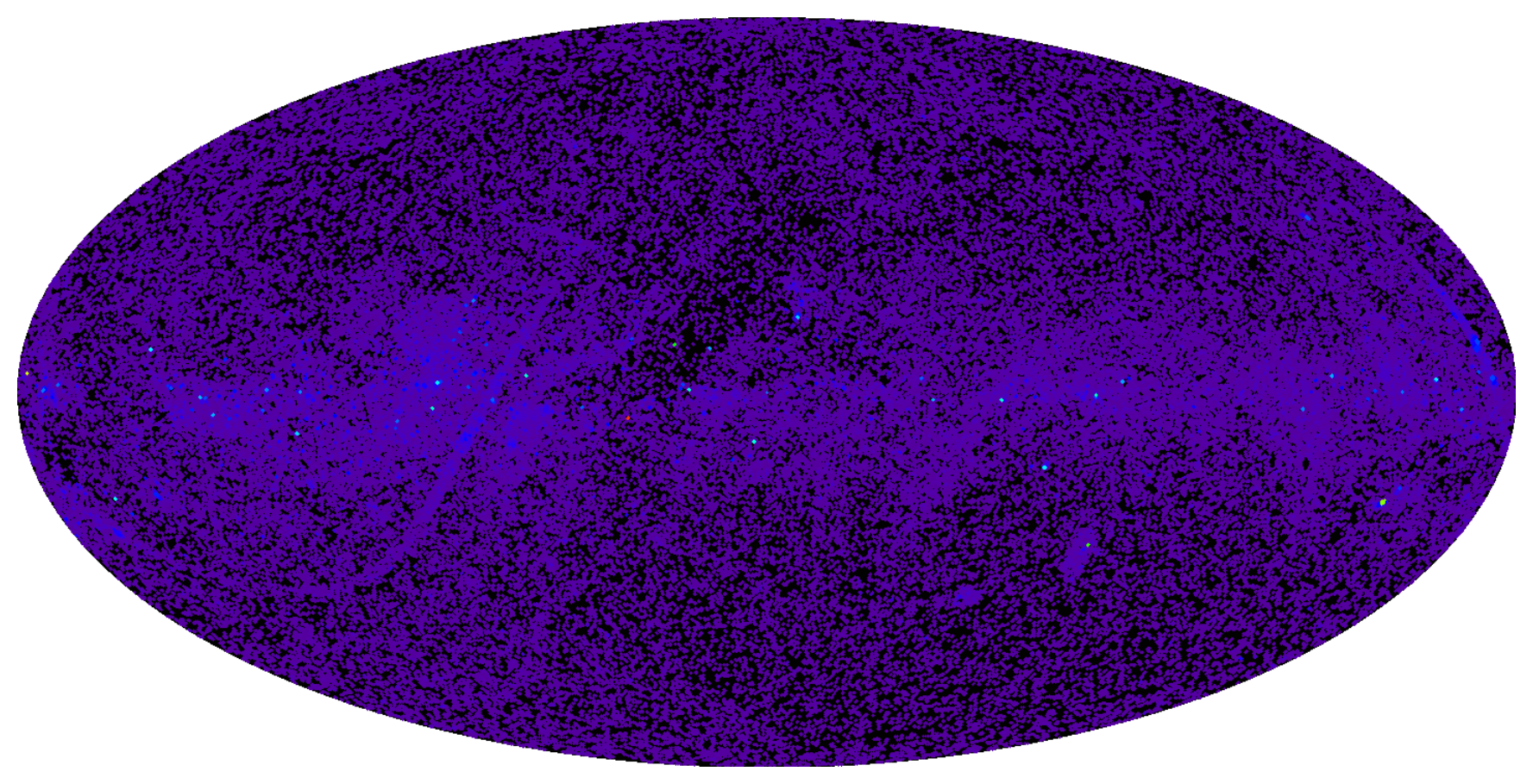|
Alpha Andromedae
Alpha Andromedae (α Andromedae, abbreviated Alpha And or α And), officially named Alpheratz , is 97 light-years from the Sun and is the brightest star in the constellation of Andromeda when Beta Andromedae undergoes its periodical dimming. Immediately northeast of the constellation of Pegasus, it is the upper left star of the Great Square of Pegasus. Although it appears to the naked eye as a single star, with overall apparent visual magnitude +2.06, it is actually a binary system composed of two stars in close orbit. The chemical composition of the brighter of the two stars is unusual as it is a mercury-manganese star whose atmosphere contains abnormally high levels of mercury, manganese, and other elements, including gallium and xenon.Alpheratz, Kaler Star2/14/2013 It is the brightest mercury-manganese star known. Nomenclature ''α Andromedae'' ( Latinisation of names, Latinised to ''Alpha Andromedae'') is the star's Bayer designation. Ptolemy considered t ... [...More Info...] [...Related Items...] OR: [Wikipedia] [Google] [Baidu] |
Bayer Designation
A Bayer designation is a stellar designation in which a specific star is identified by a Greek or Latin letter followed by the genitive form of its parent constellation's Latin name. The original list of Bayer designations contained 1,564 stars. The brighter stars were assigned their first systematic names by the German astronomer Johann Bayer in 1603, in his star atlas '' Uranometria''. Bayer catalogued only a few stars too far south to be seen from Germany, but later astronomers (including Nicolas-Louis de Lacaille and Benjamin Apthorp Gould) supplemented Bayer's catalog with entries for southern constellations. Scheme Bayer assigned a lowercase Greek letter (alpha (α), beta (β), gamma (γ), etc.) or a Latin letter (A, b, c, etc.) to each star he catalogued, combined with the Latin name of the star's parent constellation in genitive (possessive) form. The constellation name is frequently abbreviated to a standard three-letter form. For example, Aldebaran in the constellation ... [...More Info...] [...Related Items...] OR: [Wikipedia] [Google] [Baidu] |
Boss General Catalogue
''Boss General Catalogue'' (''GC'', sometimes General Catalogue) is an astronomical catalogue containing 33,342 star A star is an astronomical object comprising a luminous spheroid of plasma held together by its gravity. The nearest star to Earth is the Sun. Many other stars are visible to the naked eye at night, but their immense distances from Earth make ...s. It was compiled by Benjamin Boss and published in the United States in 1936. Its original name was ''General Catalogue of 33,342 Stars'' and it superseded the previous ''Preliminary General Catalogue of 6,188 Stars for the Epoch 1900'' published in 1910 by Benjamin's father Lewis Boss. Astronomical catalogues of stars 1910 non-fiction books 1936 non-fiction books 1930s in science 1910s in science 1936 in science 1910 in science 1900 in science {{astronomy-book-stub ... [...More Info...] [...Related Items...] OR: [Wikipedia] [Google] [Baidu] |
Star
A star is an astronomical object comprising a luminous spheroid of plasma held together by its gravity. The nearest star to Earth is the Sun. Many other stars are visible to the naked eye at night, but their immense distances from Earth make them appear as fixed points of light. The most prominent stars have been categorised into constellations and asterisms, and many of the brightest stars have proper names. Astronomers have assembled star catalogues that identify the known stars and provide standardized stellar designations. The observable universe contains an estimated to stars. Only about 4,000 of these stars are visible to the naked eye, all within the Milky Way galaxy. A star's life begins with the gravitational collapse of a gaseous nebula of material composed primarily of hydrogen, along with helium and trace amounts of heavier elements. Its total mass is the main factor determining its evolution and eventual fate. A star shines for most of its active life due t ... [...More Info...] [...Related Items...] OR: [Wikipedia] [Google] [Baidu] |
Brightest Stars
This is a list of stars arranged by their apparent magnitude – their brightness as observed from Earth. It includes all stars brighter than magnitude +2.50 in visible light, measured using a ''V''-band filter in the UBV photometric system. Stars in binary systems (or other multiples) are listed by their ''total'' or ''combined'' brightness if they appear as a single star to the naked eye, or listed separately if they do not. As with all magnitude systems in astronomy, the scale is logarithmic and inverted i.e. lower/more negative numbers are brighter. Most stars on this list appear bright from Earth because they are nearby, not because they are intrinsically luminous. For a list which compensates for the distances, converting the ''apparent'' magnitude to the ''absolute'' magnitude, see the list of most luminous stars. Measurement The Sun is the brightest star as viewed from Earth, at −26.74 mag. The second brightest is Sirius at −1.46 mag. For comp ... [...More Info...] [...Related Items...] OR: [Wikipedia] [Google] [Baidu] |
Light-year
A light-year, alternatively spelled light year, is a large unit of length used to express astronomical distances and is equivalent to about 9.46 trillion kilometers (), or 5.88 trillion miles ().One trillion here is taken to be 1012 (one million million, or billion in long scale). As defined by the International Astronomical Union (IAU), a light-year is the distance that light travels in a vacuum in one Julian year (365.25 days). Because it includes the time-measurement word "year", the term ''light-year'' is sometimes misinterpreted as a unit of time. The ''light-year'' is most often used when expressing distances to stars and other distances on a galactic scale, especially in non-specialist contexts and popular science publications. The unit most commonly used in professional astronomy is the parsec (symbol: pc, about 3.26 light-years) which derives from astrometry; it is the distance at which one astronomical unit subtends an angle of one second of arc. D ... [...More Info...] [...Related Items...] OR: [Wikipedia] [Google] [Baidu] |
United States Naval Observatory
United States Naval Observatory (USNO) is a scientific and military facility that produces geopositioning, navigation and timekeeping data for the United States Navy and the United States Department of Defense. Established in 1830 as the Depot of Charts and Instruments, it is one of the oldest scientific agencies in the United States, and remains the country's leading authority for astronomical and timing data for all purposes. The observatory is located in Northwest Washington, D.C. at the northwestern end of Embassy Row. It is among the few pre-20th century astronomical observatories located in an urban area; initially located in Foggy Bottom near the city's center, it was relocated to its current location in 1893 to escape light pollution. The USNO has conducted significant scientific studies throughout its history, including measuring the speed of light, observing solar eclipses, and discovering the moons of Mars. Its achievements including providing data for the first ra ... [...More Info...] [...Related Items...] OR: [Wikipedia] [Google] [Baidu] |
Washington Double Star Catalog
The Washington Double Star Catalog, or WDS, is a catalog of double stars, maintained at the United States Naval Observatory. The catalog contains positions, magnitudes, proper motions and spectral types and has entries for (as of June 2017) 141,743 pairs of double stars. The catalog also includes multiple stars. In general, a multiple star with ''n'' components will be represented by entries in the catalog for ''n-1'' pairs of stars. History The database used to construct the WDS originated at Lick Observatory, where it was used to construct the Index Catalog of Visual Double Stars, published in 1963. In 1965, under the initiative of Charles Worley, it was transferred to the Naval Observatory. The catalog has since been augmented by many measurements, mainly from the Hipparcos and Tycho catalogues and results from speckle interferometry, as well as other sources. A unique 1–3 letter discovery code is used to identify the observer who reported the information. For example, ... [...More Info...] [...Related Items...] OR: [Wikipedia] [Google] [Baidu] |
Smithsonian Astrophysical Observatory Star Catalog
The Smithsonian Astrophysical Observatory Star Catalog is an astrometric star catalogue, created by Smithsonian Institution, a research institute. It was published by the Smithsonian Astrophysical Observatory in 1966 and contains 258,997 stars. The catalogue was compiled from various previous astrometric catalogues, and contains only stars to about ninth magnitude for which accurate proper motions were known. Names in the SAO catalogue start with the letters SAO, followed by a number. The numbers are assigned following 18 ten-degree bands of declination, with stars sorted by right ascension within each band. Online version of the SAO Catalog was created by the HEASARC in March 2001 based on ADC/CDS Catalog I/131A, which itself is originally derived from a character-coded machine-readable version of the Smithsonian Astrophysical Observatory Star Catalog (SAO, SAO Staff 1966) prepared by T.A. Nagy in 1979, and subsequently modified over the next decade or so. Examples of SA ... [...More Info...] [...Related Items...] OR: [Wikipedia] [Google] [Baidu] |
PPM Star Catalogue
The PPM Star Catalogue (Positions and Proper Motions Star Catalogue) is the successor of the SAO Catalogue. It contains precise positions and proper motions of 378,910 stars on the whole sky in the J2000/ FK5 coordinate system. It is designed to represent as closely as possible the IAU (1976) coordinate system on the sky, as defined by the FK5 star catalogue. Thus, the PPM is an extension of the FK5 system to higher star densities and fainter magnitudes. Description The PPM can be considered a replacement of two preceding astrometric catalogs which served a similar purpose: AGK3 and the SAO Catalog. In contrast to the PPM, these older catalogs are based on (1) the now obsolete FK4 system of positions and proper motions, and (2) only two position measures per star. While the SAO catalog is more or less complete to V=9, with 4,503 stars fainter than V=10, the PPM catalog is fairly complete to V=9.5, with 102,672 stars fainter than V=10 and 22,395 stars fainter than V=11. Releas ... [...More Info...] [...Related Items...] OR: [Wikipedia] [Google] [Baidu] |
New Luyten Two-Tenths Catalogue
A star catalogue is an astronomical catalogue that lists stars. In astronomy, many stars are referred to simply by catalogue numbers. There are a great many different star catalogues which have been produced for different purposes over the years, and this article covers only some of the more frequently quoted ones. Star catalogues were compiled by many different ancient people, including the Babylonians, Greeks, Chinese, Persians, and Arabs. They were sometimes accompanied by a star chart for illustration. Most modern catalogues are available in electronic format and can be freely downloaded from space agencies' data centres. The largest is being compiled from the spacecraft Gaia and thus far has over a billion stars. Completeness and accuracy are described by the faintest limiting magnitude V (largest number) and the accuracy of the positions. Historical catalogues Ancient Near East From their existing records, it is known that the ancient Egyptians recorded the names of on ... [...More Info...] [...Related Items...] OR: [Wikipedia] [Google] [Baidu] |
Index Catalogue Of Visual Double Stars
The Index Catalogue of Visual Double Stars, or IDS, is a catalog of double stars. It was published by Lick Observatory in 1963 and contains measurements for 64,250 objects, covering the entire sky. The database used to construct this catalog was later transferred from Lick Observatory to the United States Naval Observatory, where it became the basis for the Washington Double Star Catalog. , Brian D. Mason, Gary L. Wycoff, and William I. Hartkopf, astrometry department, United States Naval Observatory
United States Naval Observatory (USNO) is a scientific and military facility that produces geopositioning, navigation and ...
[...More Info...] [...Related Items...] OR: [Wikipedia] [Google] [Baidu] |







